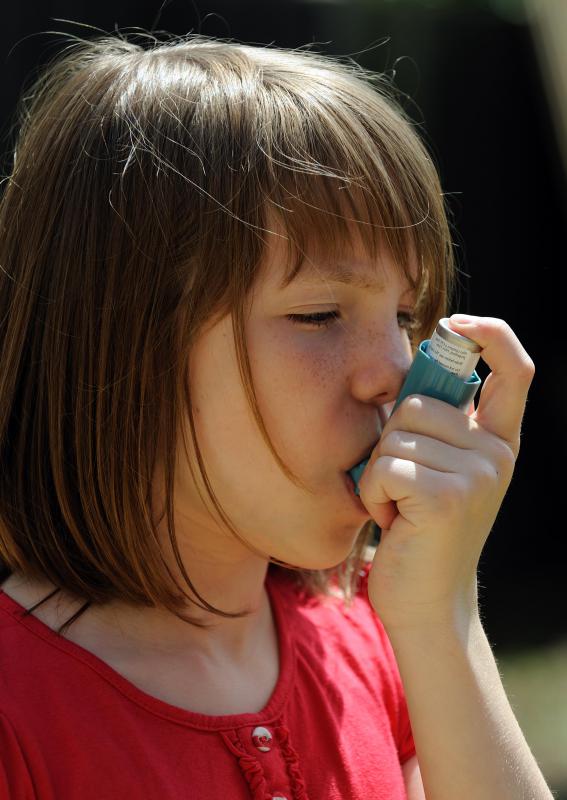At AllThingsNature, we're committed to delivering accurate, trustworthy information. Our expert-authored content is rigorously fact-checked and sourced from credible authorities. Discover how we uphold the highest standards in providing you with reliable knowledge.
What Is Lobelia Inflata?
Lobelia inflata is a plant that is native to North America and historically was used in Native American medicine. It is a herb that has a straight stem, pale leaves and blue flowers. Potentially poisonous, the leaves and seeds form part of herbal remedies and homeopathic treatments for conditions like asthma.
Another name for Lobelia inflata is Indian Tobacco, as the leaves taste like chewing tobacco. Pukeweed is another common term for the plant, as it found a use in the 1800s as an agent to stimulate vomiting. Other names for Lobelia inflata include gagroot, bladder pod or asthma weed.

The plant prefers to grow in sunlight, and likes locations like meadows, road verges and open woods. It typically grows for one year before dying off, although the species can also last for two years. In appearance, the herb is about 3 feet (about 1 m) in height, and has hairs on the lower portion of the stem; the stalks only grow off this portion. Inside the stem is a milky sap, and the leaves are pale green in color, or have a yellow tint. In the summer, the herb produces flowers that are blue with a yellow interior, and the spherical fruits that it produces contain the seeds that, along with the leaves, form the herbal remedy made from the plant.

Appropriate soil for Lobelia inflata is acid, rich in nutrients and moist. A comfortable temperature range for the plant is roughly between 44° to 66° Fahrenheit (7° to 19° Celsius.) Although it likes lots of sun, it can also survive in partial sunlight.
Widespread across the North American continent, Lobelia inflata has a range from the eastern seaboard over as far as Kansas. Native Americans used the plant to treat asthma patients, who used to smoke it in the same way as tobacco is commonly smoked. Lobelia inflata does contain a chemical that has a noticeable effect on the body called lobeline.
At one point, Lobelia inflata found a use as a tobacco replacement therapy, but this is banned in countries such as the United States. Herbal and homeopathic remedies containing Lobelia inflata are based on the historical uses of the plant, which include problems with the respiratory tract like asthma or bronchitis. Although minuscule doses like those in homeopathic remedies may be safe to ingest, the plant is poisonous, and can prompt vomiting, seizures and may even be lethal.
Frequently Asked Questions
What is Lobelia inflata and where can it be found?
Lobelia inflata, commonly known as Indian tobacco, is a plant native to Eastern and Central North America. It thrives in open fields, pastures, and woodlands. This species is recognized by its small violet flowers and inflated seed pods, which give it the name "inflata."
What are the traditional uses of Lobelia inflata?
Historically, Lobelia inflata has been used by Native Americans and later by herbalists for its purported medicinal properties. It was traditionally used to treat respiratory conditions, muscle disorders, and as a smoking cessation aid. However, its use is controversial due to potential toxicity at high doses.
Is Lobelia inflata safe to consume?
While Lobelia inflata contains compounds that may offer some health benefits, it can be toxic if ingested in large quantities. Symptoms of lobelia poisoning include nausea, vomiting, diarrhea, coughing, dizziness, and tremors. It is crucial to consult a healthcare provider before using lobelia for medicinal purposes.
How is Lobelia inflata used in homeopathy?
In homeopathy, Lobelia inflata is used in highly diluted forms to treat conditions such as asthma, bronchitis, and coughs. Homeopaths believe it helps stimulate the respiratory system. However, scientific evidence supporting homeopathic remedies is limited, and they are often considered placebos by the mainstream medical community.
Can Lobelia inflata be grown in a home garden?
Yes, Lobelia inflata can be grown in a home garden, provided it has well-drained soil and partial to full sunlight. It is a hardy plant that can tolerate various conditions and is often grown for its ornamental value. Gardeners should handle it with care due to its toxic nature when consumed in large amounts.
What wildlife is attracted to Lobelia inflata?
Lobelia inflata is known to attract a variety of pollinators, including bees, butterflies, and hummingbirds, which are drawn to its nectar-rich flowers. The plant also serves as a food source for certain caterpillar species that feed on its leaves, playing a role in the local ecosystem.
AS FEATURED ON:
AS FEATURED ON:












Discuss this Article
Post your comments